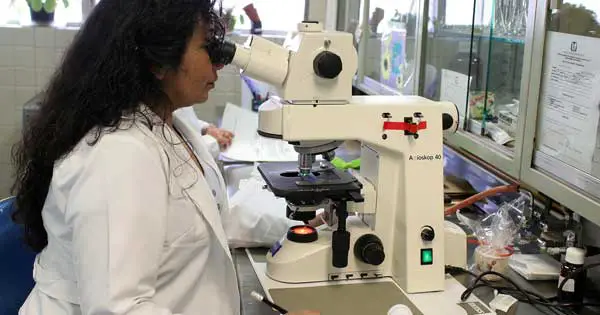An advanced new technique of testing and matching DNA could open up the possibility of identifying hundreds of the babies buried in mass grave at Tuam Mother and Baby Home.
The technique is far wider reaching than current forensic DNA testing, meaning the chances of finding out the identities of the babies is much greater.

In the past, the technique, known as genetic genealogy, was used to reconnect adoptees and family members. However, it has been now used in criminal cases in the US and has helped provide evidence to arrest up to 50 murder suspects.
Leading genealogist Maurice Gleeson explained some of the science. He said: “Its use outside of genealogy in the area of law enforcement is definitely novel.
“This will eventually be extended to other ‘unknown persons’ such as soldiers’ remains and mass grave situations.
“The power of genetic genealogy is exemplified in what they’ve done in the US in the last year.
“It has been a game-changer.
“They’ve arrested 50 suspected serial killers and rapists and they’ve used genetic genealogy to succeed where standard forensic science has failed over the last 20 [to] 30 years.
“Because a lot of these people they’ve arrested, the crimes were committed 20 or 30 years ago, but genetic genealogy, a new technique, has got much greater power to actually find these people, because it’s got much greater reach.”
The discovery of the remains of 798 buried babies at the Mother and Baby Home in Tuam shocked Ireland and the rest of the world in 2016.
Immediately there were calls for the government to excavate the site and identify the infants.
Mr Gleeson explained why the geneic genealogy technique could offer more answers than the standard forensic tests.
He said: “The standard forensic tests would be relatively low-level compared to the ones that we use for commercial purposes, which use up a lot more of the DNA sample.
“A standard forensic test is relatively low-level and it would test 17 markers on your chromosomes, whether your commercial test would test 700,000 markers.
“So it’s a huge order of magnitude difference. I think the standard forensic approach is definitely the best chance of success initially and anything that’s left over then as a second line of attack we could look at the genetic genealogy option.
“It is certainly a very feasible option and I have no doubt it will be considered by the project team.”
The varying condition of the remains mean that it may not be possible to ger a DNA sample from each of the individuals, but Gleeson is optimistic that hundreds of the babies could be identified.
He continued: “There’ll only be enough DNA in forensic tests in 200 of those. In that situation you’re comparing the forensic DNA with the private database that has voluntary samples or targeted samples in their database and we might be able to identify 50 out of them.
“But the other 300 that are left we might be able to get enough DNA to do a commercial DNA test and we could do both [a forensic one and a commercial one and compare them with private and public project databases].
“I’d say out of the 300 we probably would be able to identify 200 to 250 of those.
“That would represent about a third being identified and I think that would a great success.”
Forensic expert Dr Geoffrey Shannon submitted a report to the government detailing the various options under laws here relating to DNA sampling.
Mr Gleeson said: “I have quite a high degree of confidence they will be able to come up with a cogent plan for DNA testing and analysis.
“I’d be surprised if we can get DNA from all of the remains. There is a number of hurdles that need to be overcome and one of the biggest hurdles is are the remains in good enough state that we can actually extract good quality DNA samples from the bones?
“I was encouraged by the interim report which reported that when they did look into the pit they saw sets of remains which appeared to be in ‘excellent condition’.
“So that augurs well to be able to recover sufficient DNA from the bones. If anything I’m going to be involved in the genealogical side [of the Tuam DNA testing].
“And that only kicks in once you’ve got sufficient DNA extracted and you then have to test it.”
Mr Gleeson has first-hand experience of the benefits the DNA testing can have for families. He recently helped an 80 year-old mother reconnect with her 60 year-old son after he was taken from her in a mother and baby home.
He said: “She is in touch with him. I thought it was a very important message to get across that even at 80 years of age even if you’ve given up that child for adoption you can find that child and reconnect.
“And after that the future is open to you and the past is behind you.
“They may have 10 years of an excellent quality of a relationship or 15 if they’re very lucky.
“But at least they have each other now, which is something they didn’t have before this.”
More popular articles and videos
The real life mystery of what Maureen O’Hara whispered to make John Wayne look so shocked
Matt Damon winning hearts and minds with charm assault on Ireland
Action hero Tom Cruise was once attacked by an old man in a Kerry pub
Liam Neeson speaks about his late wife in emotional interview
Dating site explains why Irish men make wonderful husband material
Billy Connolly says public should ignore politicians and listen to comedians
Take a look inside Hollywood star Saoirse Ronan’s stunning Irish home
